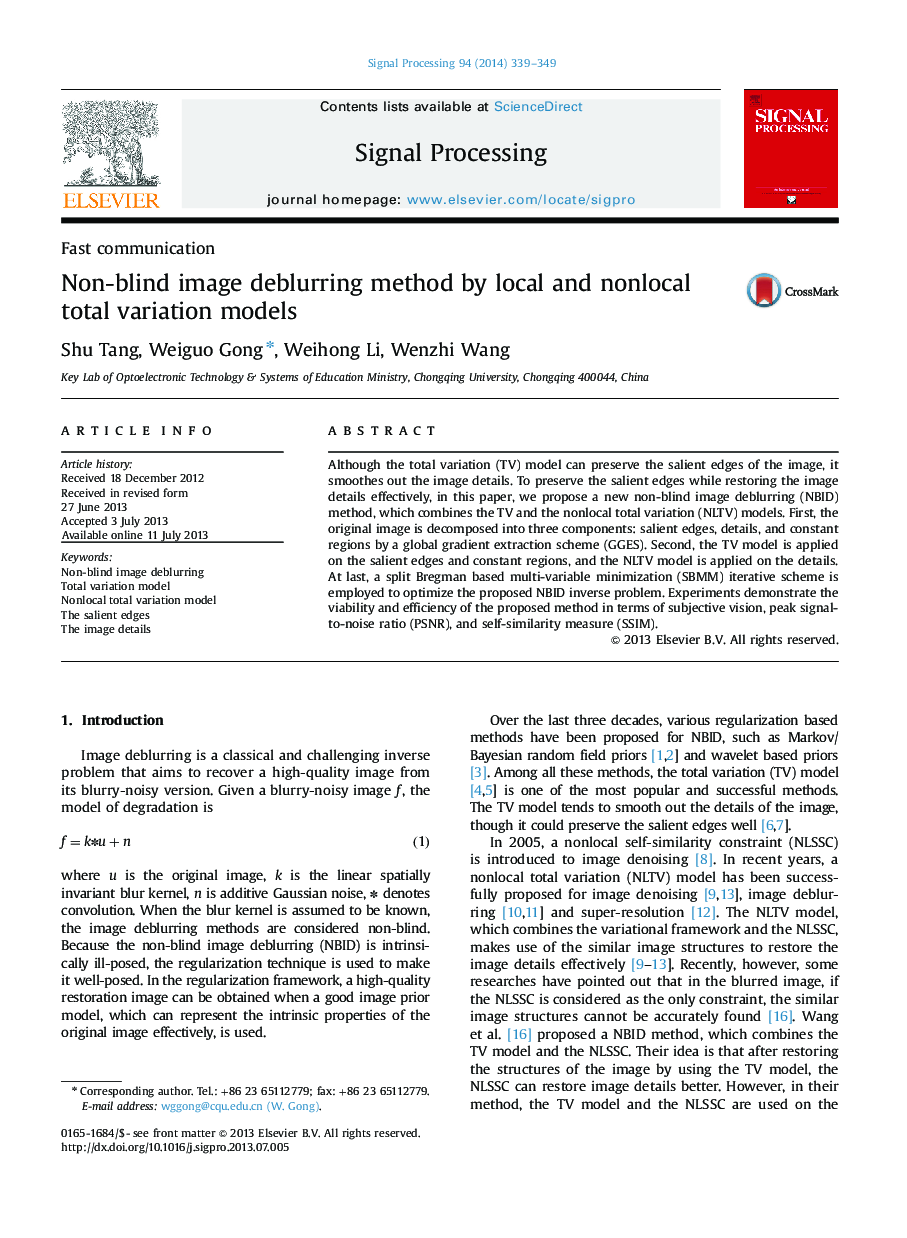| Article ID | Journal | Published Year | Pages | File Type |
|---|---|---|---|---|
| 566506 | Signal Processing | 2014 | 11 Pages |
•An image deblurring method which combines the TV and NLTV models is proposed.•The original image is split into salient edges, constant regions and image details by a GGES method.•The TV model is applied only on the salient edges and constant regions.•To recover the details, the NLTV model is applied only on the image details.•A SBMM iterative scheme is employed to optimize the proposed inverse problem.
Although the total variation (TV) model can preserve the salient edges of the image, it smoothes out the image details. To preserve the salient edges while restoring the image details effectively, in this paper, we propose a new non-blind image deblurring (NBID) method, which combines the TV and the nonlocal total variation (NLTV) models. First, the original image is decomposed into three components: salient edges, details, and constant regions by a global gradient extraction scheme (GGES). Second, the TV model is applied on the salient edges and constant regions, and the NLTV model is applied on the details. At last, a split Bregman based multi-variable minimization (SBMM) iterative scheme is employed to optimize the proposed NBID inverse problem. Experiments demonstrate the viability and efficiency of the proposed method in terms of subjective vision, peak signal-to-noise ratio (PSNR), and self-similarity measure (SSIM).
